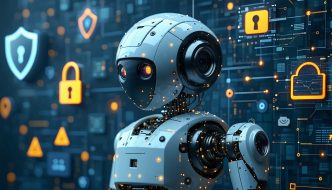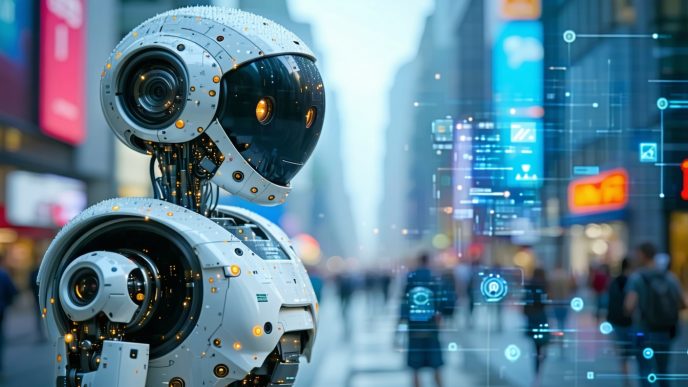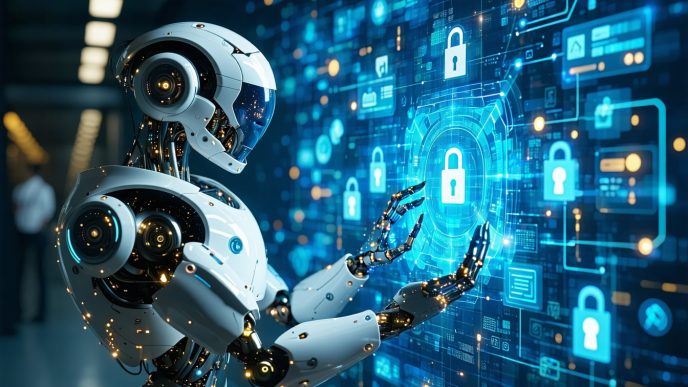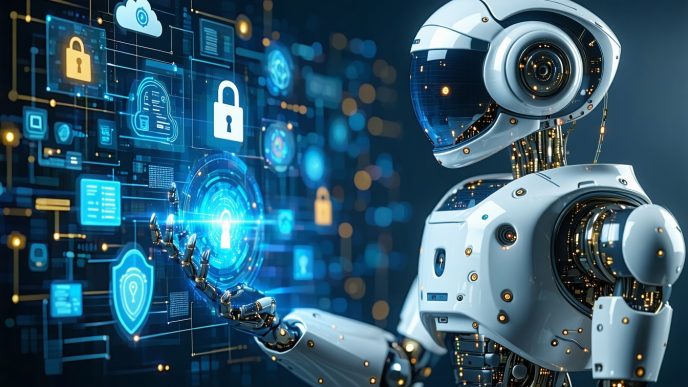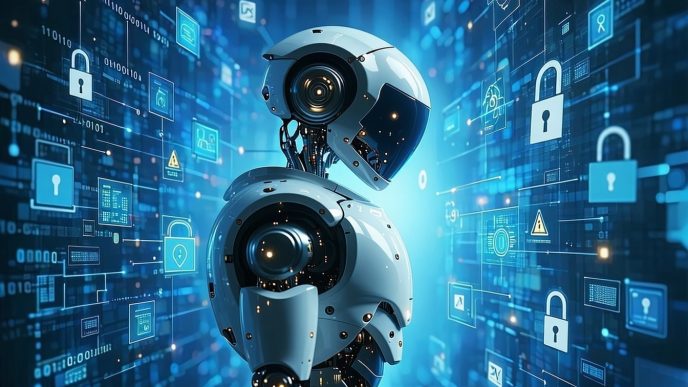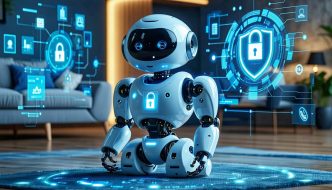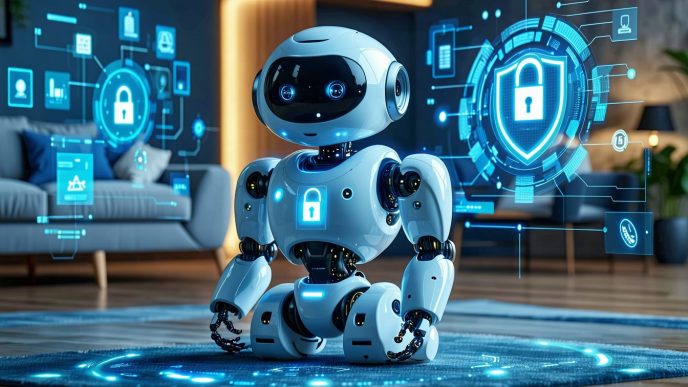Understanding Robot Surveillance Risks
Introduction to Robot Microphone and Camera Security
Robot microphone and camera security are becoming increasingly important as more households integrate robotic devices into their daily lives. These devices often come equipped with sensors capable of audio and visual surveillance, raising significant questions about privacy and data protection. Homeowners, parents, and tech adopters need to be aware of how these features operate and the potential risks involved. Understanding the capabilities of these devices is essential for ensuring the safety of personal data.
The following table highlights common features related to robot microphones and cameras:
| Feature | Description |
|---|---|
| Microphone | Captures audio within the environment of the robot. |
| Camera | Records video or captures images of surroundings. |
| Connectivity | Often connected to Wi-Fi, allowing remote access and control. |
| Data Storage | Data may be stored locally or in the cloud. |
For detailed insights on how these devices collect and store data, refer to our article on how robots collect and store data.
Why Privacy Concerns with Robots Matter
Privacy concerns surrounding robotic devices are significant because they can lead to unauthorized surveillance and data collection. These machines can gather sensitive information without individuals being aware, making it crucial for users to understand the implications of robot microphone and camera security.
The risks associated with privacy violations include:
- Unauthorized Surveillance: Devices could record conversations or activities without consent.
- Data Misuse: Captured data could be misused by third parties for malicious purposes.
- Loss of Control: Users may find it challenging to manage or delete collected data, leading to a loss of control over personal information.
Homeowners and parents must be proactive in addressing these risks. Understanding privacy settings in home robots and how to manage robot access controls and permissions can enhance security measures.
For those who are particularly concerned about threats to privacy through robotic technology, awareness of regulations around robot data privacy can offer additional protections. Familiarizing oneself with these issues fosters a safer home environment in an age where connectivity plays a significant role in daily life, further underlining the importance of addressing cybersecurity risks, particularly highlighted in our article on cybersecurity risks of connected robots.
Types of Robot Surveillance
Understanding the types of surveillance that robots can perform is essential for homeowners, parents, tech adopters, and privacy-conscious individuals. This section focuses on audio and visual surveillance, highlighting their implications and associated risks.
Audio Surveillance by Robot Microphones
Many modern robots are equipped with microphones that enable them to capture audio. This capability can serve various purposes, such as voice recognition, smart home integration, or even responding to commands. However, it also raises concerns regarding privacy.
Microphones can potentially record conversations without the consent of those involved. The risk of audio surveillance is especially pronounced in environments where sensitive discussions take place, such as homes, offices, or schools. Users should be aware of the following factors related to audio surveillance:
| Risk Factor | Impact Level | Description |
|---|---|---|
| Unauthorized Recording | High | Internal conversations may be captured without consent. |
| Data Storage and Usage | Medium | Recorded audio may be stored indefinitely and used later. |
| Misuse of Audio Data | High | Captured conversations can be shared or exploited without user awareness. |
To better understand how robots collect and store data, see our article on how robots collect and store data.
Visual Surveillance by Robot Cameras
Visual surveillance is another aspect of robot functionality featuring cameras that can observe surroundings. These cameras may offer benefits such as monitoring home security or facilitating video calls. However, the use of cameras also invites serious privacy concerns.
Cameras can capture images and videos continuously or upon specific triggers, potentially leading to unauthorized access to personal spaces. Here are some significant aspects regarding visual surveillance:
| Risk Factor | Impact Level | Description |
|---|---|---|
| Unauthorized Visual Access | High | Cameras can record areas of the home or property without consent. |
| Data Storage and Retention | Medium | Recorded video may be saved in the cloud or locally, raising issues about data management. |
| Exploitation of Visual Data | High | Images and videos can be misappropriated for malicious purposes. |
For more insights regarding how data is stored in robots, check our article on cloud storage vs local storage in robots.
Both audio and visual data capture present surveillance risks that raise valid concerns about privacy in today’s tech-savvy environment. Homeowners and users must be diligent in understanding the security features related to these capabilities, including privacy settings found in home robots. More information can be found in our article on privacy settings in home robots.
Awareness and proactive measures are key in navigating the complexities of robot surveillance and ensuring privacy. For further information on protecting personal data, visit our resources on robot data privacy and safety concerns and tips for keeping your robot secure.
Risks and Implications
Understanding the risks associated with robot surveillance is crucial for homeowners, parents, tech adopters, and privacy-conscious consumers. This section outlines the primary concerns: privacy violations and potential data misuse.
Privacy Violations and Data Breaches
As robots increasingly integrate cameras and microphones for functionality, the potential for privacy violations escalates. These devices can unknowingly capture private conversations, monitor family activities, and even record sensitive information without consent.
Data breaches pose a significant threat, as hackers can exploit vulnerabilities in the robot’s security, gaining unauthorized access to recorded data. The table below illustrates some statistics regarding data breaches related to home automation and robot surveillance.
| Year | Number of Data Breaches | Affected Records (Millions) |
|---|---|---|
| 2020 | 1,001 | 155 |
| 2021 | 1,091 | 206 |
| 2022 | 1,070 | 164 |
To mitigate these risks, homeowners should be aware of the privacy settings in home robots and regularly review their robot’s configurations. Understanding how robots collect and store data, as discussed in how robots collect and store data, can also provide insights into personal data management.
Potential Misuse of Captured Data
Captured audio and visual data can be misused in various ways. For example, stolen recordings could lead to identity theft, stalking, or targeted advertising based on personal preferences and behaviors. Moreover, if data sharing occurs with third parties, as mentioned in the article on robot data sharing with companies, this extends the risk beyond individual households.
A study illustrating consumer awareness regarding data misuse showed:
| Concern | Percentage of Respondents |
|---|---|
| Identity Theft | 76% |
| Surveillance by Companies | 69% |
| General Privacy Violations | 82% |
The importance of understanding cybersecurity risks, particularly with connected devices, is paramount. Homeowners should familiarize themselves with the cybersecurity risks of connected robots and implement protective measures, including robust robot access controls and permissions, referenced in robot access controls and permissions.
Awareness of regulations around robot data privacy, which can help in understanding rights and protections, is important as well; see our article on regulations around robot data privacy for further details.
By recognizing these implications and risks, consumers can take proactive steps to enhance their awareness and security regarding robot microphone and camera security.
Protecting Yourself from Robot Surveillance
As homeowners and privacy-conscious individuals integrate robots into their daily lives, understanding how to mitigate surveillance risks becomes crucial. This section outlines effective strategies for protecting oneself from the surveillance capabilities of robots, particularly focusing on reading privacy policies and utilizing physical covers or disabling features.
Reading Privacy Policies Mindfully
Before purchasing any robot equipped with microphones or cameras, it is vital to carefully read the privacy policies associated with the device. These documents provide essential information on how your data will be collected, stored, and potentially shared. Many consumers overlook these policies, but doing so can lead to unintended privacy violations.
Here are key points to consider when reviewing a robot’s privacy policy:
| Key Element | Description |
|---|---|
| Data Collection | Understand what data is collected, such as audio, video, or personal information. |
| Data Usage | Review how the collected data will be used, including if it will be shared with third parties. |
| Data Storage | Check where the data is stored, whether on cloud servers or locally, and for how long. |
| User Rights | Identify your rights regarding your data and how you can access, modify, or delete it. |
For more insights into how robots collect and store data, visit our article on how robots collect and store data.
Physical Covers or Disabling Features
Another effective method to prevent unauthorized surveillance is the use of physical covers or disabling features on robots equipped with cameras and microphones. By taking simple yet effective precautions, individuals can significantly reduce the chances of being monitored.
Consider the following options:
| Protection Method | Description |
|---|---|
| Physical Covers | Using lens covers or stickers on cameras can prevent visual surveillance when the device is not in use. |
| Microphone Disabling | Some robots allow users to disable the microphone feature when it is not needed. This reduces the risk of audio recording. |
It’s essential to explore the privacy settings available in your robot. Familiarizing oneself with the privacy settings in home robots can empower users to enhance their security measures effectively.
Implementing these strategies can help mitigate the risks associated with robot surveillance. Prioritizing data privacy and ensuring robust safeguards will enable homeowners and families to enjoy the benefits of robotic technology while minimizing potential risks.
Ensuring Secure Practices
Implementing secure practices is essential for protecting oneself from the risks associated with robot surveillance. Homeowners, parents, and privacy-conscious consumers should consider the following measures: regularly updating firmware and software, and securing their home network.
Regularly Updating Firmware and Software
Keeping firmware and software up to date is a critical step in maintaining the security of robot devices equipped with cameras and microphones. Manufacturers often release updates to address vulnerabilities, improve functionality, and enhance privacy settings. By ensuring that devices operate on the latest version, individuals can reduce the risk of exploitation by malicious actors.
To keep track of updates, homeowners can set reminders to check for new versions periodically. Some devices even offer automatic updates, which can simplify this process. Below is a simple checklist for managing software updates:
| Update Action | Frequency |
|---|---|
| Check for updates | Weekly |
| Install updates | As soon as available |
| Review privacy settings | Monthly |
For more on the information robots collect and how it’s stored, refer to our article on how robots collect and store data.
Securing Your Home Network
An unsecured home network poses a significant risk to privacy, particularly when robots equipped with microphones and cameras are connected to it. Implementing robust security measures helps safeguard against unauthorized access and data breaches. Below are recommended practices for enhancing home network security:
- Change Default Passwords: Alter default usernames and passwords for routers and connected devices to unique, complex credentials.
- Enable WPA3 Encryption: Use the latest encryption standards on Wi-Fi networks to prevent unwanted access.
- Set Up a Guest Network: Isolate devices by creating a separate network for guests, limiting access to personal devices.
- Regularly Monitor Connected Devices: Periodically check the list of devices connected to the network and remove any unfamiliar ones.
The following table summarizes the key security features to look for when establishing a home network:
| Security Feature | Description |
|---|---|
| WPA3 Encryption | The most advanced level of Wi-Fi security |
| Firewall Protection | Blocks unauthorized access to the network |
| Network Segmentation | Separates devices to minimize risk |
| Device Access Controls | Restricts network access based on device type |
For more comprehensive strategies on securing data and privacy settings in home robots, check our article on privacy settings in home robots. By adopting these secure practices, individuals can foster a safer environment, minimizing risks associated with robot microphone and camera security.
Being Vigilant
Staying aware of potential surveillance risks is essential for homeowners and privacy-conscious consumers. By recognizing warning signs and understanding the legal landscape regarding robot surveillance, individuals can take proactive measures to protect their privacy.
Recognizing Warning Signs
Several indicators can suggest that a robot may pose a surveillance risk. Homeowners should be on the lookout for the following:
| Warning Sign | Description |
|---|---|
| Unexplained Data Requests | If a robot regularly requests data that seems irrelevant to its function, it may be logging unnecessary information. |
| Frequent Updates Requesting Permissions | Updates that repeatedly ask for permissions can signal potential data collection changes. |
| Abnormal Operational Behavior | Unintended camera or microphone activation can point to vulnerabilities. |
| Lack of Transparency in Privacy Policies | Robots with unclear privacy policies may not adequately protect user data. |
Awareness of these signs empowers individuals to assess their robot’s security and take action if necessary, such as adjusting privacy settings in home robots.
Seeking Legal and Regulatory Support
Understanding existing laws and regulations can provide additional safety for consumers. Several regulations aim to protect data privacy for users of connected devices, including robots. Homeowners should learn about relevant laws concerning robot surveillance, especially those specific to their region. For example, regulations around data privacy in their area may govern how companies handle user data gathered by robots.
| Regulation | Description |
|---|---|
| GDPR (General Data Protection Regulation) | Enforces strict data protection policies across Europe, requiring businesses to protect user information. |
| CCPA (California Consumer Privacy Act) | Grants California residents rights regarding their personal information collected by businesses. |
| COPPA (Children’s Online Privacy Protection Act) | Protects the privacy of children under 13 by regulating the data collected from them. |
Consumers can also seek assistance from privacy advocacy groups that provide resources, advice, and support regarding robot data privacy and safety concerns. Understanding the legal landscape allows individuals to make informed choices about the robots they bring into their homes. Reporting suspicious activities to local authorities or regulatory bodies is important for community awareness and safety.
By remaining vigilant and informed, consumers can effectively protect themselves from the risks associated with robot surveillance.

